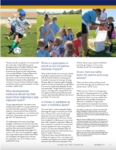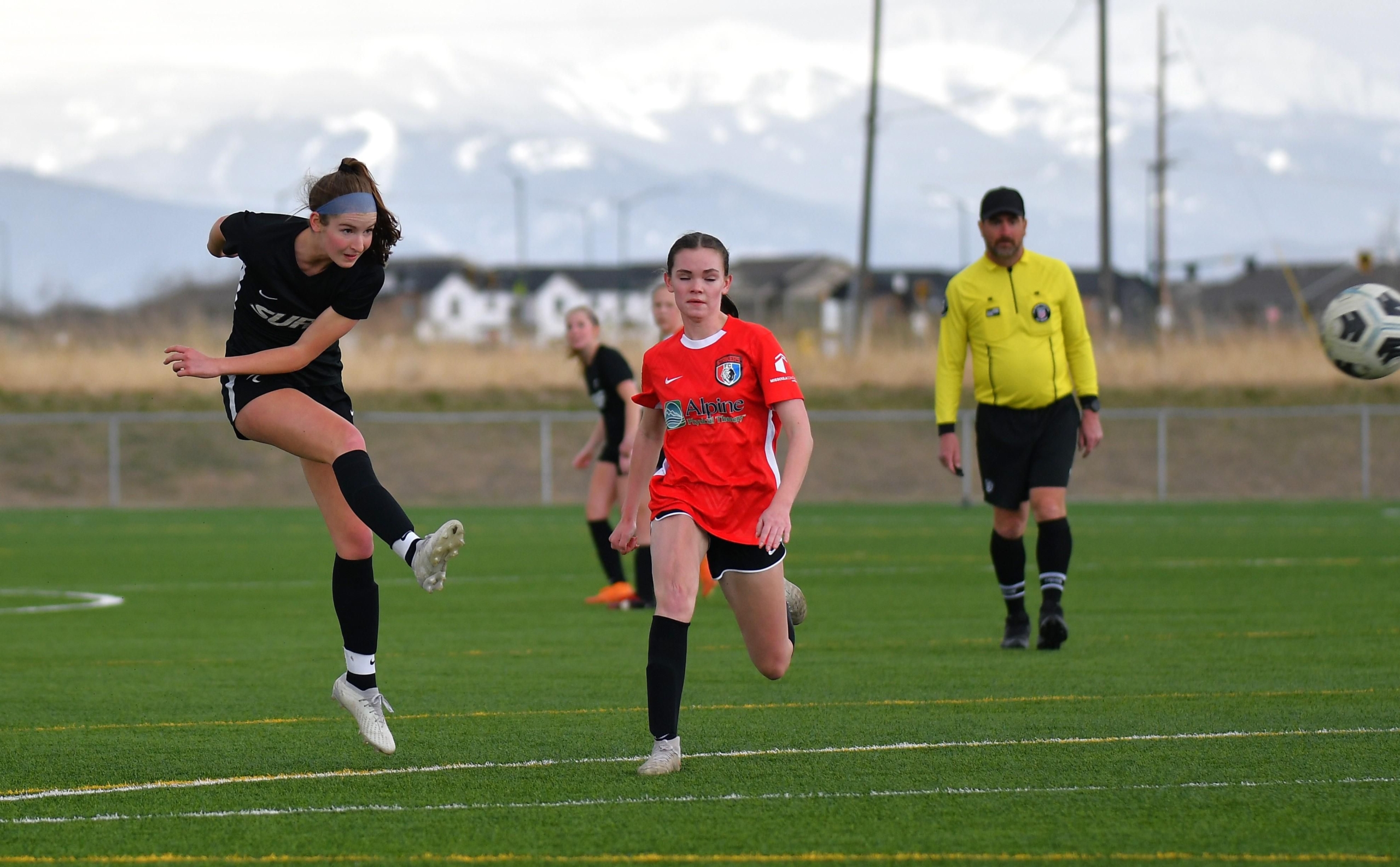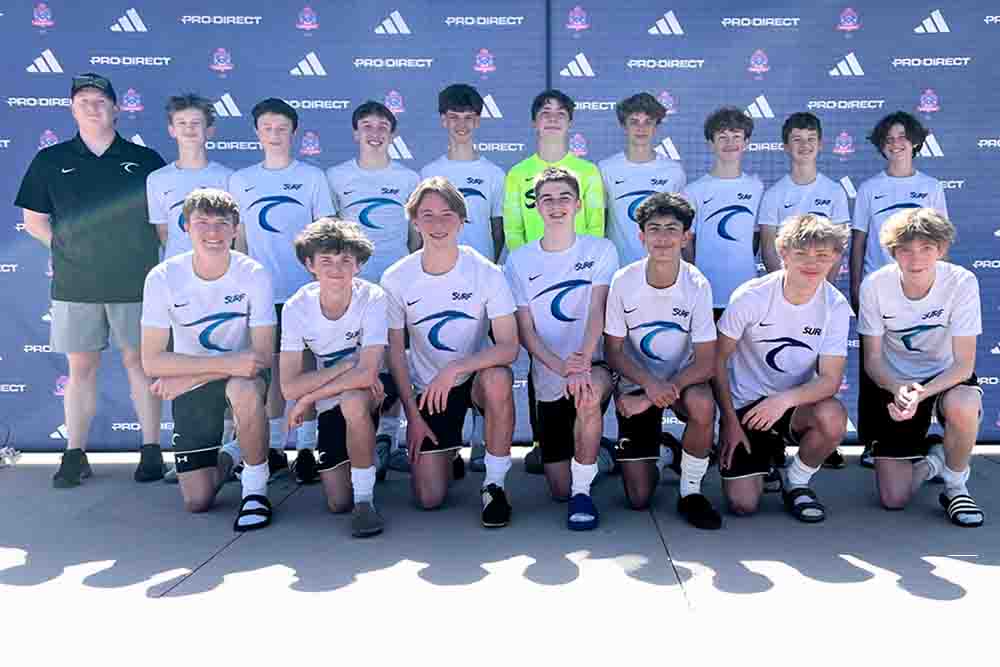by Cate2
Share
Share

Youth Sports: When is the right time to get in the game?
Youth sports have a big impact on both children and the communities in which they live. According to Aspen Institute’s “Project Play,” physically active children are 1/10 as likely to be obese, their test scores are up to 40% higher than non-active children, they are 15% more likely to go to college, and they have far lower levels of depression and self-derogation. Making movement a habit at a young age is important and can lay the foundation for positive outcomes later in life.
But how early is it safe to start? What activities are age appropriate? Are competitive sports ok for young children? Dr. Claire Kenamore, from Billings Clinic’s Bozeman-based pediatric practice and Dr. Kathryn Lowe, another local pediatrician and author share their insight and expertise:
What is the best age and way to introduce young children to sports?
“For young kids, it’s all about movement, fun and establishing exercise habits as part of a healthy daily routine. For babies this will be basic, age-appropriate movements like learning to control their head, how to roll over, sit, stand and walk. As they grow into toddlerhood, physical activity may start to look more like sports. Things like learning to catch and throw a ball, running, tumbling, dancing, and more. Starting off at home or at the park with friends and sampling a variety of sports and movements is a great way to begin.” – Dr. Lowe.
“It’s never too early if kids are asking to participate,” shared Dr. Kenamore. “So many families live in Montana to lead an outdoor lifestyle and they are very intentional about it. Starting kids skiing, biking and hiking at age three is commonplace here, and as long as the child shows interest, it goes well.”
If you have a child who is hesitant to try new things, what can you do to persuade them to get out of their comfort zone?
“For those shy kids that are reluctant to try new things, oftentimes they just need to be nudged to choose a sport. Parents in this situation can require an after school activity but offer many to choose from. This is not authoritarian parenting, rather it is a way to help kids make new friends and memories while building skills along the way. The consequences of not participating are real.” – Dr. Kenamore
What activities and sports are best to begin with?
“Introducing movement habits early and in a fun, lighthearted, child-led way is a great way to get kids interested in sport and to keep them engaged. Gymnastics is a great first sport for toddlers. It is a safe, fun, well-rounded environment that builds strength and balance. Some of the most accomplished high school athletes started in gymnastics.” Dr. Kenamore
“Variety is key for young kids. It’s recommended that youth play multiple different sports throughout early and middle childhood, rather than specializing in one thing, as this can avoid overuse injuries and also helps develop more rounded athletes. Trying multiple sports also helps kids figure out what they love. Gymnastics, dance and swimming can be great introductions to sports as they emphasize movement and coordination, building strength and skill that will be a great foundation for other activities.” – Dr. Lowe
What developmental milestones should my child reach before beginning to play organized sports?
“To play organized sports, kids need to have developed some skills like running and throwing and need to be able to put them together. For instance, in soccer kids will have to have the strength and coordination to run and kick at the same time. This develops naturally around the age of 6.” – Dr. Kenamore
“As children grow and mature they’ll gain strength, coordination and attention span that will allow them to participate in more organized activities. Most sports can be adapted for different ages and developmental stages. For instance, US Youth Soccer guidelines suggest that young children play on scaled down fields with small goals, short game times, and only 4 players per team on the field at a time.” – Dr. Lowe
When is it appropriate to introduce the competitive elements of sports?
“Most children develop the emotional aptitude to handle competitive sports around the age of 8. At that point they are more prepared to handle the pressure of winning and losing. However, the most important part of playing sports for all kids, and especially young children, is to have fun and develop physically, socially and emotionally. The goal should be to grow as a person, learning how to win gracefully, lose with dignity, build friendships, develop adult mentors, hone leadership skills, and take care of your body.” – Dr. Lowe
Is it better to participate in team or individual sports?
“Try both! Sports medicine specialists highly discourage focusing on one sport year round. Even swimmers focus on dry land training these days. Not only is this good for their physical training but gives their brain a break from that black line. Most parents know when their child is ready for competition. Whatever that competition is, parents and coaches need to be fun, positive and really, really good at losing! If you show sportsmanship, they will show sportsmanship and it will hopefully last a lifetime.” – Dr Kenamore
“Team sports have unique benefits like team building, learning how to be a team player and cooperate, learning how we are better together and more. But what’s most important is that children choose a sport they love. Individual sports like gymnastics can have a team mentality as well.” – Dr. Lowe
Do you have any safety advice for parents and young athletes?
“Make sure your little one is wearing proper gear that fits. Sports physicals start in middle school but we watch for the same red flags in younger kids. Reach out to your pediatrician right away for any episodes of passing out, chest pain or headache during exercise. These symptoms can represent more serious underlying conditions.” – Dr. Kenamore
“Teams should be made up of kids who are around the same age, size and skill level to help prevent injury.” – Dr. Lowe
About Dr. Kenamore:
Billings Clinic’s Dr. Claire Kenamore is a third-generation physician who believes in the importance of getting to know families. She prioritizes being available to her patients when needs arise so that families are secure in the care they are receiving. Dr. Kenamore practices in the Billings Clinic Bozeman pediatric office.
About Dr. Lowe:
Dr. Kathryn Lowe is a local pediatrician, professor and author of “You-ology: A Puberty Guide for Every Body,” where all parts of puberty are discussed, including the importance of physical activity.



STAY IN THE LOOP







